Wrong Asian, Again
what a runaway, a hit-and-run driver & a Malaysian singer all have in common
A couple years ago I wrote about “the curious case of the other Anna May Wong”—a mysterious Asian woman who kept popping up in my research, mistakenly labeled as AMW, when I knew she was someone else entirely. Her cat-eye makeup, bobbed hair, and plump cheeks clearly distinguished her from the real AMW. When I finally got to the bottom of it, I found out the woman was named Jue Quon Tai, also known more commonly by her married name, Quon Tai Lachman.
Quon Tai came from a prominent Chinese American family in the Northwest, spent a good part of her youth performing on the vaudeville circuit, and later married artist and film director Harry Lachman. Once Harry’s film career took off, Quon Tai became a well known party hostess in Hollywood circles. As it turns out, Quon Tai and Anna May were quite good friends, being the modern-minded Chinese American gals that they were. I write briefly about the Lachmans in my book, including the grand cocktail party they threw for Anna May on the eve of her departure for China in 1936.
I wish I could say this was the only time another Asian woman was mistaken for Anna May Wong and vice versa. But as anyone familiar with the “Wrong Asian” phenomenon knows, mixing up people of similar “ethnic types” is a frustrating, though sometimes humorous, fixture of American life. Perhaps even more so when one happens to be an internationally famous movie star.
For example, there was the time Anna May came across an unusual ad addressed directly to her in the personals section of a Los Angeles paper:
ANNA MAY WONG, screen star, call at 908 North State Street. Important.
Mother.Now, AMW knew perfectly well where her mother was since she was still living at home with her family at the time. This cryptic message both alarmed and intrigued her. At the advice of her lawyer, she contacted the police and paid the woman at 908 North State Street a visit, with her sister and three detectives at her side.
This instance of mistaken identities was actually a case of wishful thinking. The tired-looking woman who came to the door explained that she was searching for her missing daughter and had hoped against hope that AMW was her grown-up child.
“She ran away from China ten years ago and I have sought to find her,” the woman said. “I saw you on the screen. You looked like what I believe she must look now. I’m sorry if I’m mistaken, but I want to find my little girl.”
Anna May gave the woman what consolation she could, “patted her on the cheek affectionately and offered a word of encouragement,” but as she and the detectives retreated, the woman’s eyes welled up with tears. The last hope that her daughter was still out there, alive and thriving as a film star, had evaporated.
Then there was the time AMW was charged with a hit and run in Austria while she was six thousand miles away in Southern California. “MISS WONG ACCUSED IN AN AUTO ACCIDENT: Film Actress, Accompanied by Rudolf Friml, Struck Cyclist, Austrian Police Say” ran the headline in the New York Times, which was picked up by newspapers across the country.

Well, imagine Anna May’s surprise when she read the news of her own purported exploits one September morning in 1932. Only two years prior she had performed in an operetta on the Viennese stage. The show and her celebrity proved so popular that the police had to be called in to break up the crowds that gathered to see her. I suppose AMW made such an impression on the Austrian people that they must have thought she was the only living Chinese American woman in the world. Naturally, when they apprehended a Chinese American woman in connection with this car accident, they assumed she must be the one and only.
Of course, she wasn’t Anna May Wong. She was Mary Wong of New York (no relation to AMW’s sister, also named Mary Wong). The paper of record, however, took the Austrian police’s word for it, without bothering to phone AMW’s representatives and confirm whether she was indeed in Austria. Anna May was incensed by this egregious mixup. “There is no excuse for such gross negligence on the part of the paper,” she wrote to her friend Carl Van Vechten.
The following day the New York Times ran another article headlined: “ACTRESS IS NOT ACCUSED: Austrian Police Mistake Another for Anna May Wong.” But there was no apology to AMW, nor a retraction of the original article. “The Times carried a small paragraph in their September thirteenth issue that the police made a mistake in identifying the girl, which doesn’t correct the damage done to me in their first story,” AMW fumed in her letter to Carl.
Almost a hundred years later, you’d think news organizations would have gotten better at this. When word of actress and comedian Ali Wong’s divorce from husband Justin Hakuta made the rounds in 2022, the image attached to articles by Parade magazine and MSN were of Wong and fellow actor Randall Park, her co-star from Always Be My Maybe. Yikes.
Perhaps the most puzzling instance of an Anna May Wong doppelgänger can be found in connection with a 1960 film called The Savage Innocents. While the film’s credits include an actress by the name of Anna May Wong, don’t be fooled—the woman so named is not the one you think she is. Believe me, this enigma took some real digging to uncover.
Set in the Arctic, The Savage Innocents is pretty much what it sounds like: a documentary-style feature film that purports to romanticize the Inuit people and their noble savage—sometimes outright savage—ways (think Nanook of the North). The first problem, among many, is that no Inuit people appear in the film (aside from two likely Inuit stuntmen who paddle in canoes and glide past glaciers on the Arctic sea during a hunting scene). Inuk, the male lead, is played by Mexican American actor Anthony Quinn and his wife, Asiak, is portrayed by Japanese actress Yôko Tani. Many of the characters follow a similar casting, with Inuit men played by white actors and Inuit women played by Asian actresses.
Savage Innocents is easily the most racist film I’ve ever watched. I don’t recommend watching it. (I haven’t had the resolve to sit through The Birth of a Nation yet, though I assume it will easily jump to number one on the list of most racist cinematic works of all time.) The Inuits are presented as bumbling half-wits who speak in pidgin and seem to be constantly laughing to demonstrate their “childlike” demeanor. We soon learn that the phrase “to laugh with someone” also means intercourse.
Anthony Quinn’s character is a brute who nearly rapes his wife on their wedding night, offers a bowl of rotting meat with maggots crawling all over it to a guest in his igloo, and “accidentally” murders a white missionary who refuses to “laugh with” his wife as a gesture of hospitality. A white lawman (played by a young Peter O’Toole) is sent to bring Inuk to justice for his murder of the missionary. In the end, the lawman spares him for he realizes the white men in town will never understand the Inuit’s “backward” moral code and, rather than drag Inuk into a legal system that will only see him hang, the trooper sets him free into the Arctic wilds.
Oh, and when Savage Innocents was re-released on Blu-Ray in 2017, critic J. Hoberman for the New York Times praised it as “a deeply romantic tale of misunderstood outsiders on the run” that “is deadly serious in its attempt to approximate the Eskimo language and view of the world.” Ha! Is that all the New York Times had to say about one of the most racist films made in recent history? Hoberman merely qualifies his compliments by adding that, as director Nicholas Ray’s “most overtly ethnographic work, the movie flirts with a sort of simpering exoticism.”
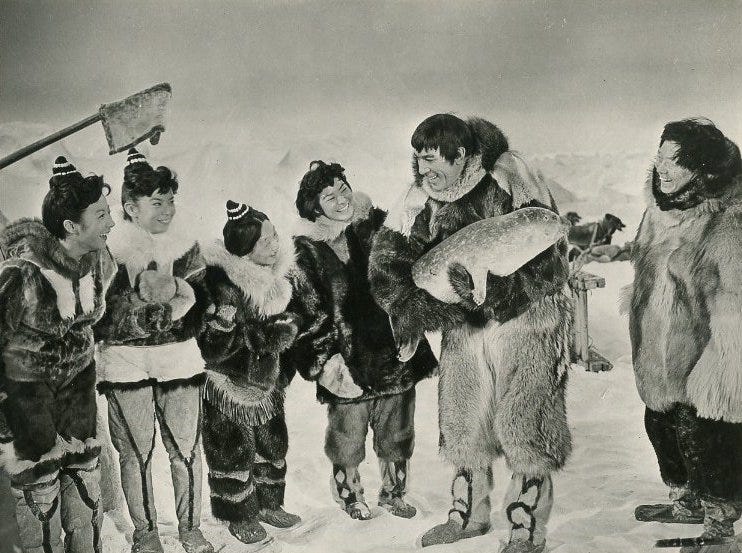
But what does all of this have to do with Anna May Wong? Aside from her name being listed in the cast, there are a few other reasons why even a few film buffs have been duped over the years into believing that AMW actually appeared in this film.
The first is the fact that Anthony Quinn is the lead. Anna May was good friends with both Anthony Quinn and his wife Katherine DeMille, adopted daughter of Cecil B. DeMille. In fact, some of Quinn’s earliest parts were in many of AMW’s Paramount films like Daughter of Shanghai, Dangerous to Know, King of Chinatown, and Island of Lost Men. The two actors had just reunited in Portrait in Black (1960), which was touted as AMW’s comeback picture, so it’s conceivable that they would have continued their collaboration with The Savage Innocents.
And then knowing that Anna May’s sister Lulu Wong made her one serious foray into movies in the 1933 picture Eskimo, somehow makes it seem more plausible that Anna May would later play a similar part. For her role, Lulu was required to spend more than six months in Alaska to shoot on location and learn the local language; the film’s dialogue was spoken completely in Inupiat and subtitled in English, quite an unusual move for the time.
Even when copies of Savage Innocents were hard to come by, those who had seen the film swore that Anna May Wong was in it (including Hoberman in the NYT). They claimed she was the older Asian woman in the role of Inuk’s mother-in-law, who is “left on an ice floe to die” and be eaten by a polar bear. This is precisely why I had to watch this terrible film, to see for myself whether Anna May Wong is in it.
Here’s what I learned: It’s just another case of Wrong Asian! The old woman was played by Marie Yang, not Anna May Wong, original or otherwise.
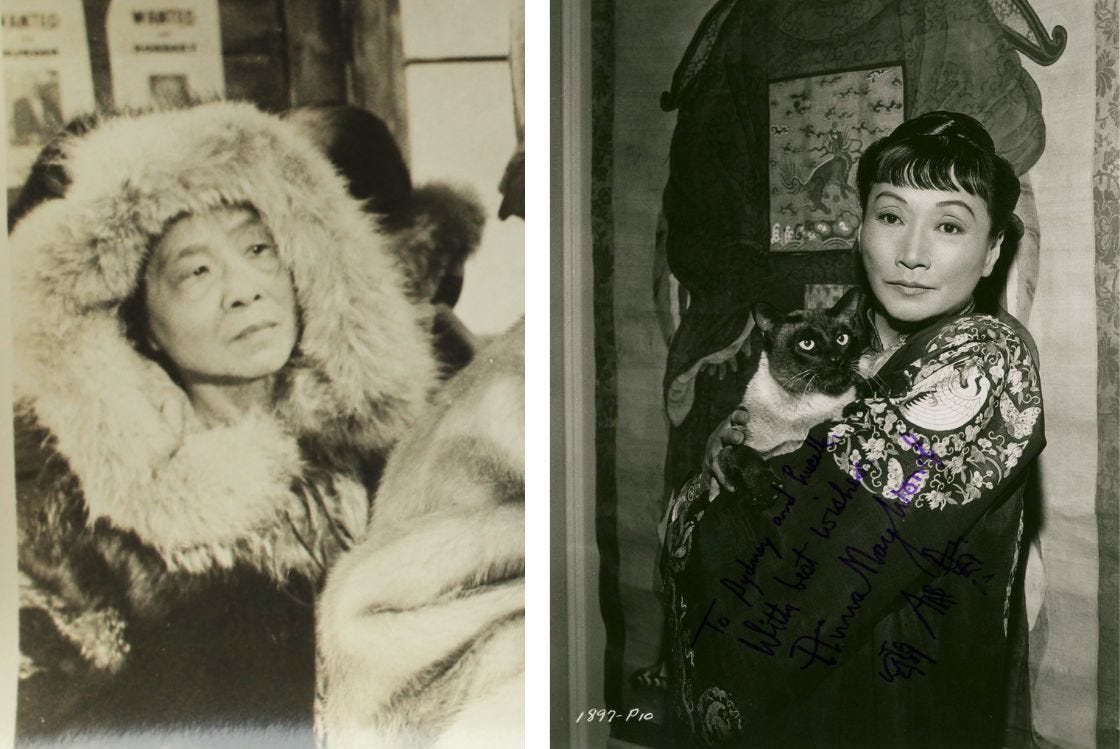
As always with these types of research riddles, I finally found the answer I was looking for via some midnight googling. A February 1962 issue of a Malaysian magazine called Picture Parade popped up on eBay featuring one Anna May Wong on the cover. The young woman wearing a yellow silk cheongsam and gold kitten heels in front of a palm tree is clearly not the Anna May Wong the world had long known. The original, in fact, had already departed from this world, having died in 1961 of a heart attack in her Santa Monica home.
In a box beneath the magazine’s contents page, a blurb on the cover girl reads:
Malaysians have every right to be proud of Anna May Wong for she is their very own, having been born in Kuala Lumpur and educated in Singapore.
This talented young lady whom we saw in “The Savage Innocents” and who has recently been delighting Singapore audiences with her singing, has a full measure of star-material and we all hope that it will not be long before we see her playing bigger parts in new films.
More and more producers are now seeking stories with an Oriental background and when it comes to casting, they could not do better than remember Anna May Wong.
So, this Anna May Wong was from Malaysia. I didn’t stop digging there, though, because a stray piece of misinformation on the other Anna May Wong’s IMDb page claimed she was the younger sister of Barbara Jean Wong (the Chinese Shirley Temple), which couldn’t be true if she was from Malaysia. Also, I had to know—how could this young actress dare to use the famous Anna May Wong’s name—and while she was still alive, too?
One thing I can tell you is that it’s hard to search for a woman named Anna May Wong when she isn’t the Anna May Wong. But after I figured out some helpful advanced search parameters, a few things began to come up in newspaper archives. Anna May Wong from Kuala Lumpur left her native country for London, where she intended to study fashion design. She soon became bored with it and switched to studying singing at the Royal Academy instead. Before too long, she found herself in the movies. In Savage Innocents she plays Hiko, the wife of another Inuit man, who appears briefly in two scenes in the film.
And as to her name, well, she had a good reason for it. She claimed she’d never even heard of the original Anna May Wong until she arrived in England.
“I’m told that my name is causing a lot of confusion—but what can I say?” she told a reporter from the Strait Times. “My parents named me May Wong. But five years ago I became Catholic—and my godmother gave me the name Anna because I was baptised on the feast day of St. Ann. I just hope it brings me as much success as the other Wong.”
I don’t think the younger Anna May Wong’s wish ever came true. She considered changing her name at one point, but her agent pushed back on the idea, arguing it would be “like having to start over again.” IMDb lists just four projects under her name, all of which were released in 1960. That’s where the trail goes cold.
And so ends another curious case of the other other Anna May Wong. Until next time, when the Wrong Asian strikes again!
Updates in Brief
Praise keeps rolling in for Not Your China Doll, including this beauty from Simu Liu. Have you reserved your copy yet? Order one today online or at your nearest independent bookseller.
Earlier this month, I flew to Los Angeles to attend the Chinese American Museum’s annual Historymakers Awards Gala where Anna May Wong was honored posthumously with the Dr. Dan S. Louie Jr. Lifetime Achievement Award. Anna Wong, AMW’s niece, accepted the award on her aunt’s behalf.
In a few days, I’ll be hopping back on a plane to attend a screening of Pavement Butterfly at the San Francisco Silent Film Festival’s A Day of Silents. If you’re in the area, grab a ticket while they’re still available. You don’t want to miss this gem from AMW’s filmography!




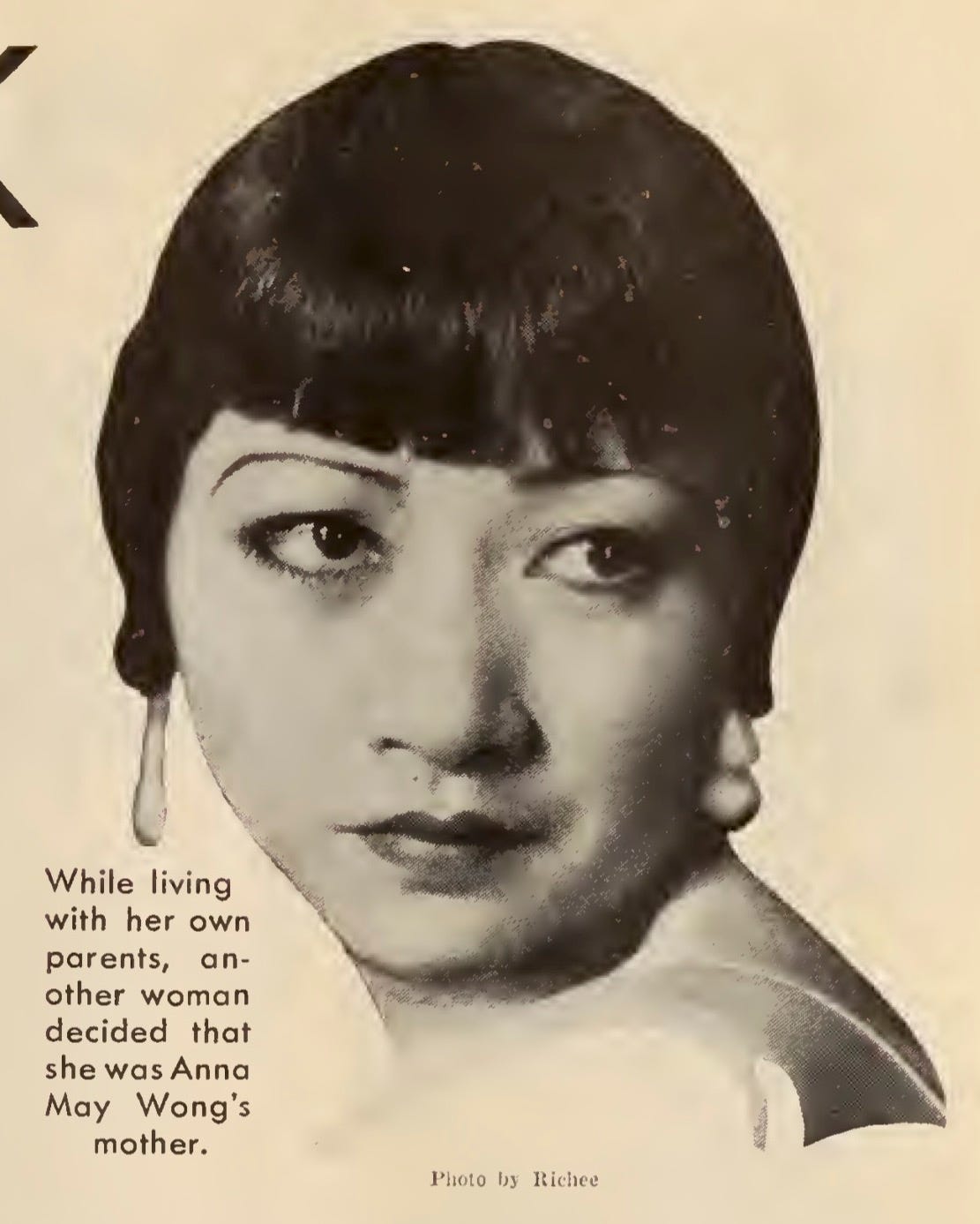
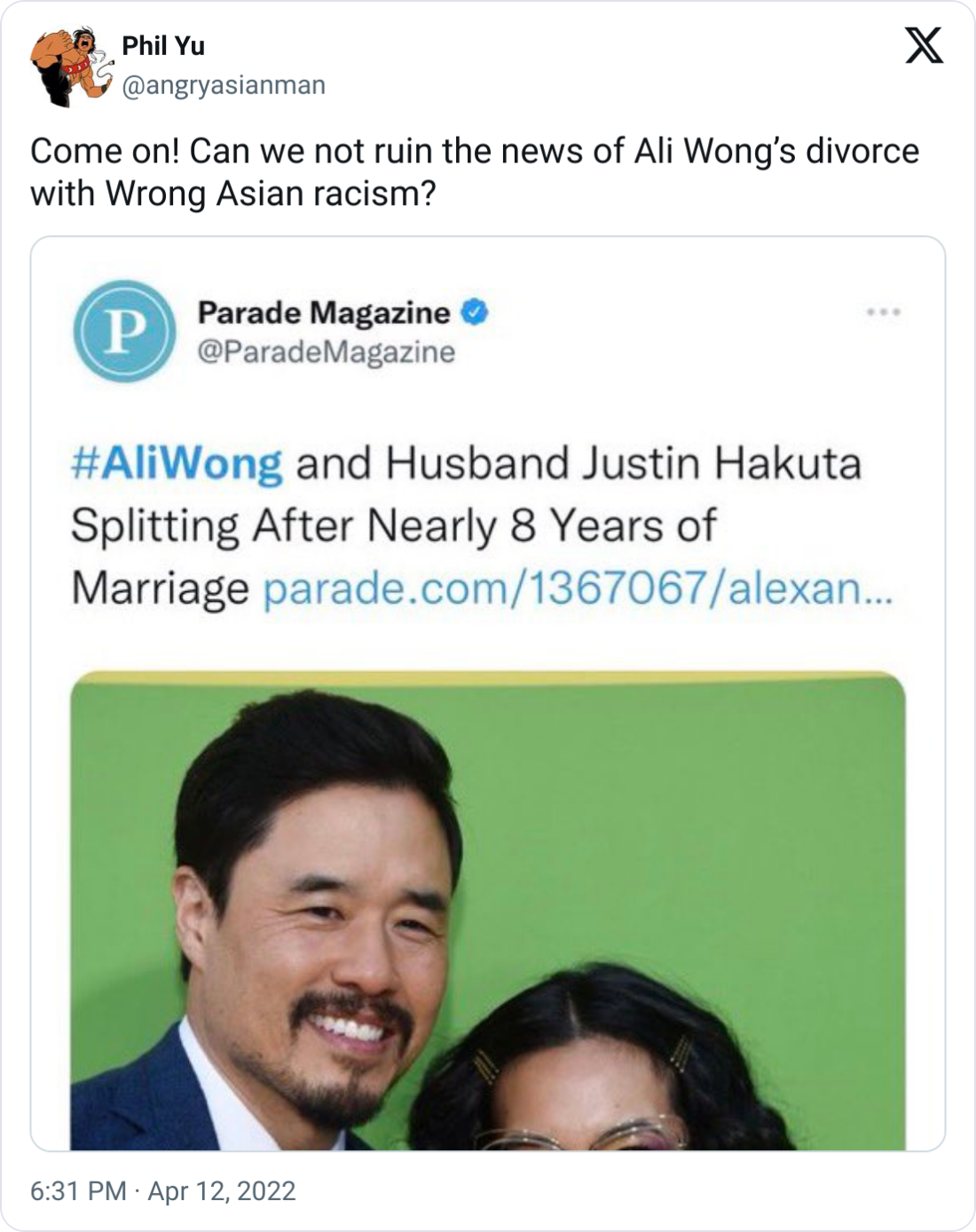
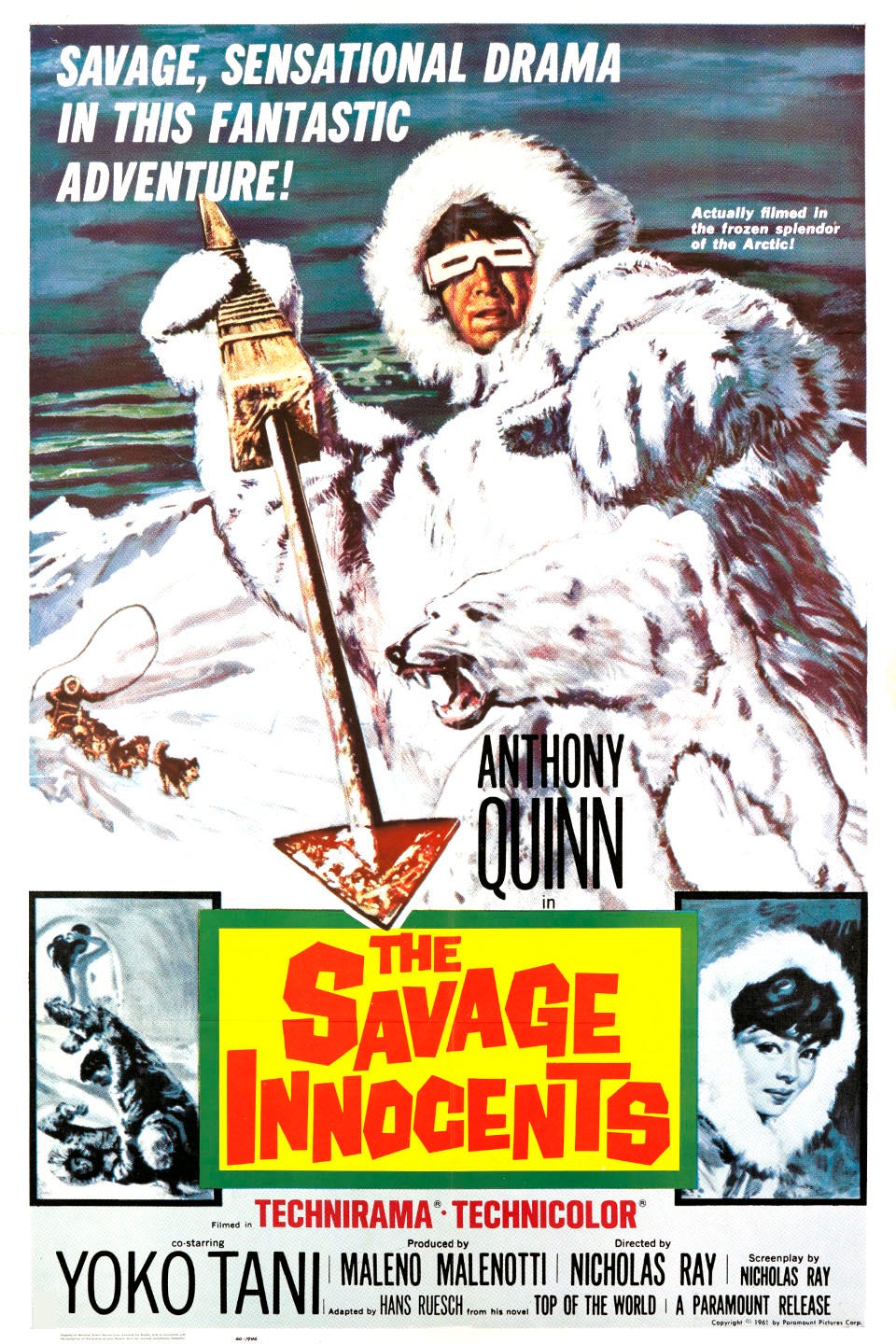

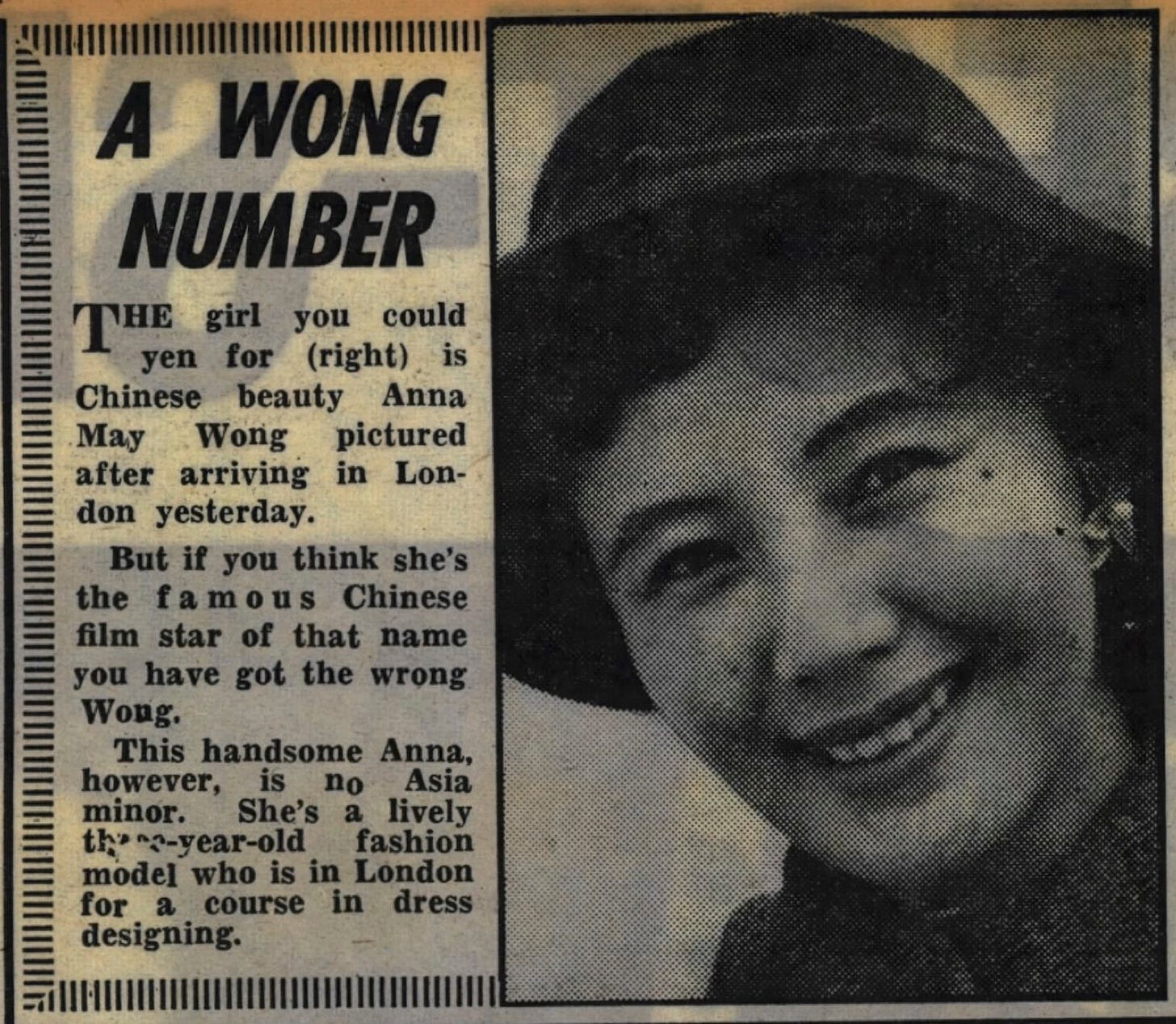


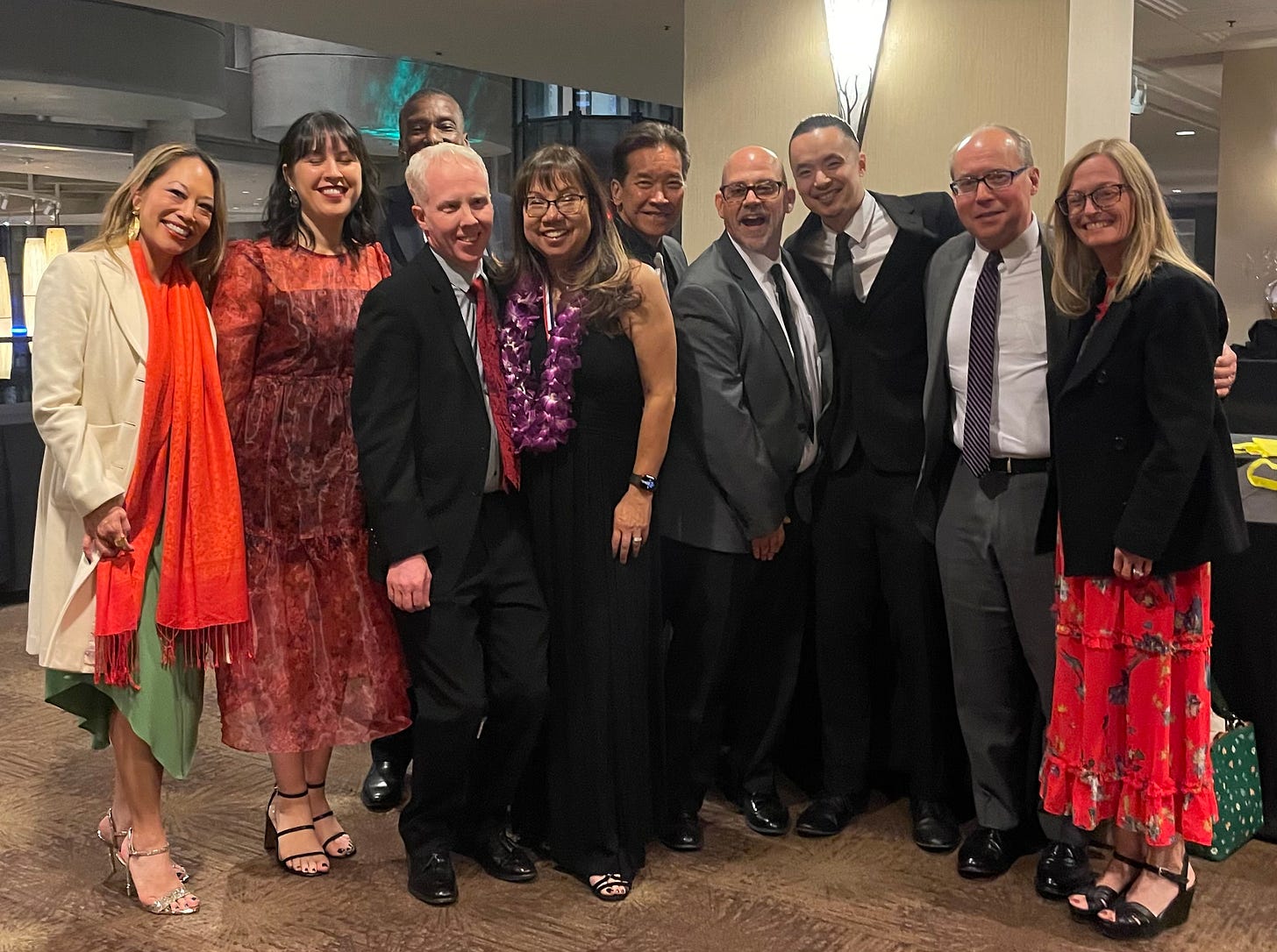
The Hollywood Chinese name game would be funny if it weren't so ghastly! Savage Innocents does sound grotesque, and Hoberman's comments inexcusable. Grand sleuthing, Katie!!! And congrats on the early raves!
will order up the book asap. Anna May Wong LIVES !! Have visited her grave site 3 times with always hope she can have a place somewhere in the Hollywood Forever Cemetery. She deserves more.